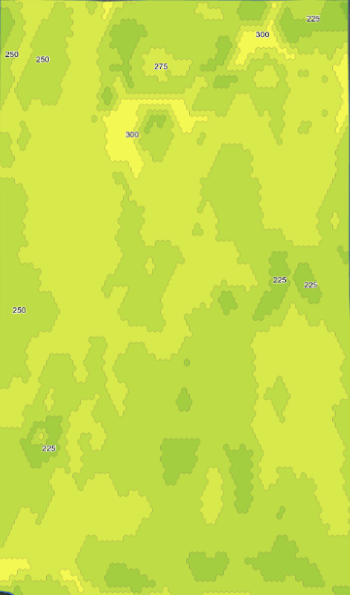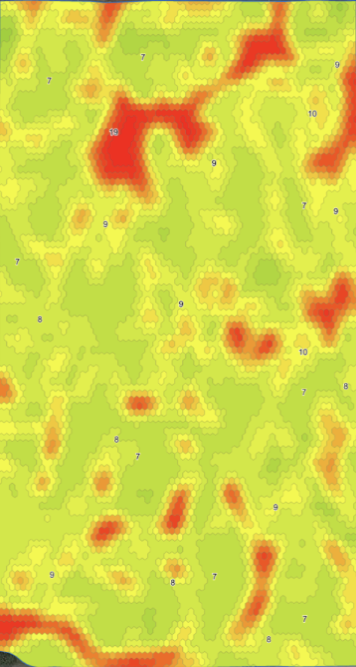Solve for N – Managing Nitrogen and Sulfur for Highest ROI
A few weeks ago, we talked about managing nitrogen and sulfur at planting and how, using the lens of environment first, we structured our starter trials to manipulate the plant’s rate of growth in the first 35-40 days of the growing season. While the idea of increased nitrogen and sulfur at planting is not a new concept for most, gaining a more complete understanding of where it is most advantageous, and why it is not typically a focus of our industry.
However, if we focus our efforts on gaining a more holistic understanding of why plant response occurs within specific environments, this allows us to extend management strategies regardless of where you farm. Continuing that thought process, let us now focus on the bulk application of nitrogen and sulfur — total amount required, and timing — through the lens of environment first.
Focusing on Environment First
When we think about nitrogen management, we must first understand three basic components.
1. Total Nitrogen Required: Total amount required by a corn crop (spatially). This is the value to not just raise a bushel of grain, but the requirement by the plant to sustain the total biomass with enough carbohydrates to allow the plant to reach physiological maturity on its own terms.

Total Nitrogen Required
2. Organic Matter Supply: Total amount mineralized from soil organic matter. Capturing this data spatially, by environment, is critical if you want to create consistency across the landscape.The manner in which a soil sample is pulled and to what specific depth will influence this value coming from the lab.


Organic Matter Contribution
3. Nitrogen Loss Potential by Landscape Position: Total loss portion by landscape position. Critical in bringing the nitrogen cycle full circle, understanding the risk of nitrogen loss across the field allows us to apply based on need, not a blanket.


Nitrogen Loss Potential
Nitrapyrin Prescription

Nitrogen Prescription
Addressing these three components allows us to have greater control over the outcomes at harvest and lessens the impact of weather by accounting for known stressors where they have the greatest impact on the crop.
Application Timing
The timing of application can be just as important as the total amount. As we think about landscapes that are predisposed to drying out first, their ability to retain moisture, thus mineralizing sulfur and nitrogen, will be far less than areas with increased catchment and organic matter.
Knowing this, how would you time your nitrogen application differently?
As you think about the acres you farm, pay attention to fields that have a higher percentage of drought-stressed environments. We classify these acres within each field across the operation to help prioritize earlier application and more aggressive early-season management to mitigate these effects.
Conversely, know where the risks for excessive moisture reside. Acres at risk for excess soil moisture would be better served to be applied in either a split application, or moved to a later sidedress application where the applied nitrogen isn’t as exposed, thus improving uptake. The adoption of variable rate nitrogen stabilizer to acres at most risk for denitrification has not only improved yield but provided an increased ROI of both the nitrogen and stabilizer being applied.
Today’s Economic Environment
For some, a nitrogen program would be pre-plant urea, ESN, AMS, or some combination thereof. For others, it may be anhydrous ammonia pre-plant, or several pre-plant combinations followed by sidedress. As growers, we want to maximize our NUE (Nitrogen Use Efficiency), but we also want the application logistics to be as simple as possible.
When searching for maximum efficiency, we may become creative in our nitrogen management approach by trying new methods and timings; however, these don’t always demonstrate an easily seen economic advantage. When less is more — both from an economic and application perspective — we may find ourselves falling back on old practices rather than continuing the search for the highest NUE. After all, we want as much certainty as possible.
Now enter where we are today. In conversations with growers since last fall, I have been hearing a common concern regarding management strategies for 2024: “Budgets are tight and we need to make sure that we are spending dollars wisely.”
When is that not the case?
I can’t think of a time when I was not concerned about maximizing my return on investment.
With this in mind, as we navigate yet another cycle of tighter budgets, our goals should remain the same: start with environment, isolate the mechanism, and view yield as just the outcome.
Understanding environment as a decision driver should be core to any (and all) Nitrogen / Sulfur strategies, to ensure ROI through consistency of response in each unique sub-acre environment.
Be Proactive Against Mother Nature
Connect with our agronomic experts to better understand how both the unique attributes of your acre and the wide-range understanding of years of agronomic data we’ve captured can combine for a smarter prescription for your fields.





Last Updated on July 26, 2024
